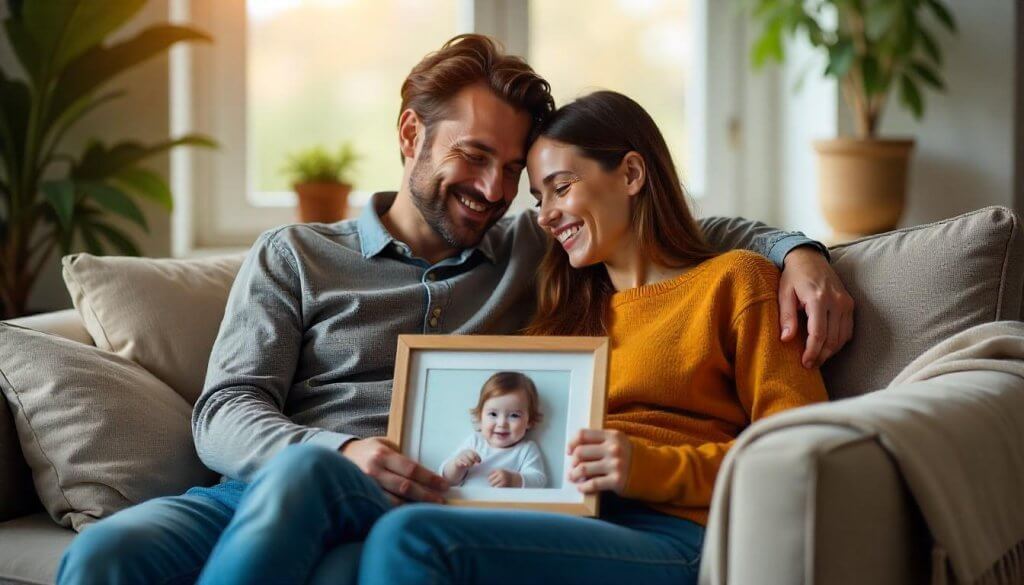Grief is a universal human experience, an unavoidable companion to loss. While intensely personal, its impact reverberates through the intricate web of relationships that define our lives. When loss strikes a family, the individual pain of each member converges, creating a unique dynamic of shared sorrow. Navigating this collective landscape, a process best described as Grief Coping Together, becomes vital for the emotional health and resilience of the entire unit.
Indeed, the death of a loved one, a significant life change, or any profound loss can challenge the very foundation of a relationship or family. It often tests communication, strains existing dynamics, and demands an unprecedented level of empathy and mutual support. This article delves into the complexities of collective grieving. It explores how couples and families can effectively provide mutual support, foster open communication, and implement shared healing strategies that can ultimately deepen their bonds and honor the enduring legacy of love amidst sorrow.
The Unique Nature of Shared Grief
While grief is an inherently individual journey, its experience within a relationship or family unit adds layers of complexity and unique challenges. Understanding this multifaceted nature is the first step in effective Grief Coping Together.
Firstly, each person grieves differently, even when mourning the same loss. One partner might express their sorrow outwardly, through tears and verbal processing, while the other might withdraw, seeking quiet reflection or solitude. Children, depending on their age and developmental stage, will also manifest their grief in distinct ways, perhaps through behavioral changes or questions about death. These differing grieving styles, though natural, can sometimes lead to misunderstandings or feelings of isolation within the unit if not openly acknowledged.
Furthermore, a significant challenge arises from the dual task of supporting someone else’s grief while simultaneously experiencing your own profound pain. It can feel overwhelming to be both the comforter and the comforted. You might yearn for support, yet feel obligated to be strong for your partner or children. This dynamic can lead to emotional exhaustion and resentment if not carefully managed.
Moreover, the “ripple effect” of loss permeates all aspects of family life. Roles might shift, daily routines are disrupted, and the very identity of the family unit can feel altered. Acknowledge that the fabric of your shared life has changed. This pervasive impact underscores why a collective approach to healing is not just beneficial, but essential.
Communication: The Lifeline in Grief Coping Together
Open and honest communication serves as the indispensable lifeline for couples and families navigating the turbulent waters of grief. It provides a safe channel for expressing emotions and fostering mutual understanding during intensely vulnerable times.
Firstly, encourage an environment where all members feel safe to voice their feelings, whatever they may be. This includes not only sadness and longing, but also anger, guilt, confusion, and even moments of unexpected relief. There is no “right” way to feel, and invalidating emotions can create distance. Use “I” statements to express personal needs and feelings without placing blame. For instance, “I feel incredibly lonely right now,” rather than “You’re not being there for me.”
Active listening is equally crucial. This means truly hearing what your partner or child is expressing, without judgment, interruption, or trying to “fix” their pain. Sometimes, just being present and offering a listening ear is the most powerful form of support. Pay attention to non-verbal cues of distress; a withdrawn posture or a lack of eye contact might signal a need for connection, even if words are scarce.
Additionally, knowing when to seek external facilitation for communication can be invaluable. If conversations consistently devolve into arguments, or if significant emotional distance emerges, a grief counselor or family therapist can provide a neutral space and tools to bridge communication gaps. This professional guidance ensures that dialogue remains constructive, fostering connection rather than further division. This conscious effort at communication forms the bedrock for effective collective grieving.
Supporting Individual Grieving Styles
While sharing loss, it is vital to remember and respect that each person’s grieving process is unique. Effective Grief Coping Together means validating these individual styles, rather than expecting uniformity.
Recognize the wide spectrum of grief expressions. Some individuals are outward grievers; they may cry often, talk extensively about the deceased, or seek constant social interaction. Conversely, others are inward grievers; they might process their pain through quiet reflection, journaling, or temporary withdrawal. Neither approach is inherently better or worse.
Furthermore, respect personal timelines and the pace of healing. Grief does not adhere to a schedule. One partner might feel ready to re-engage with social activities sooner than the other, or a child might seem to “forget” their sadness for periods, only for it to resurface later. Avoid comparisons or imposing expectations of “how to grieve.” Phrases like “You should be over this by now” or “Why aren’t you crying?” can be deeply harmful and isolating.
Creating space for individual processing is equally important. This might mean allowing a partner quiet time alone, or encouraging a child to express themselves through play or art. Validating each other’s unique pain and understanding that it might look different from your own strengthens empathy. This approach fosters an environment where everyone feels seen and supported in their personal journey through sorrow. This acceptance is fundamental to healthy collective healing.
Practical Ways to Offer Grief Coping Together Support
Beyond emotional presence, practical support can significantly ease the burden of grief and strengthen the family unit’s capacity for Grief Coping Together. These tangible actions demonstrate care and alleviate daily stressors.
Firstly, actively share practical tasks. The immediate aftermath of a loss often involves managing arrangements like funerals, estate matters, or informing others. Equally important is sharing ongoing household duties, childcare, and meal preparation. If one partner is overwhelmed by grief, the other can step up, ensuring essential tasks are still managed. This reduces the cognitive load during a time of immense emotional drain.
Secondly, actively participate in creating shared rituals and memorials. This might involve looking at old photographs together, telling stories about the deceased, or observing anniversaries and birthdays in a meaningful way. These shared activities provide collective comfort and keep the memory of the loved one alive within the family unit. Consider lighting a candle, visiting a special place, or preparing a favorite meal of the person who passed.
Furthermore, intentionally protect shared time and space. Despite the chaos of grief, make an effort to maintain some semblance of normalcy or carve out specific moments for connection, whether it’s a regular family meal, a quiet evening together, or a short walk. These moments reinforce the continuity of the relationship. Encourage self-care for each other. Remind your partner to eat, rest, or seek individual solace. Simply being present, even in silence, offering a hand to hold or a comforting hug, can be profoundly supportive. These actions demonstrate unwavering love and commitment.
Navigating Relationship Strain During Grief
The immense stress of a shared loss can, paradoxically, place significant strain on a relationship, even as couples strive for Grief Coping Together. Recognizing and addressing these potential pitfalls is crucial for maintaining intimacy.
Increased arguments are a common manifestation of grief-induced stress. Partners, each struggling with their own pain, might become more irritable, impatient, or prone to misunderstanding each other’s needs. What might ordinarily be a minor disagreement can escalate into a major conflict under the weight of sorrow.
Changes in intimacy and affection are also frequently observed. Grief can diminish libido, reduce the desire for physical closeness, or make emotional vulnerability feel too overwhelming. This can lead to one partner feeling rejected or misunderstood. Similarly, the focus on the lost loved one might inadvertently create emotional distance between the surviving partners. Each person may feel isolated in their own bubble of pain.
Therefore, it is essential to recognize the signs of relationship distress. Persistent arguments, prolonged emotional distance, or a complete breakdown in communication are red flags. In such instances, seeking professional help, such as couples or family therapy, is highly advisable. A therapist can provide a neutral space to process emotions, mediate difficult conversations, and re-establish connection. This proactive intervention ensures that grief, while transformative, does not irrevocably damage the relationship.
Honoring the Memory and Building a New Normal
A crucial aspect of Grief Coping Together involves finding meaningful ways to honor the memory of the person who passed while simultaneously building a “new normal” for the family unit. This balance acknowledges loss while embracing life’s continuation.
Keeping the memory of the deceased alive is vital. This can involve creating a memory box, dedicating a special space in the home, or celebrating their life on significant dates. Sharing stories, looking at photographs, and talking about the impact the person had on your lives helps integrate their memory into the family’s ongoing narrative. It reinforces that while they are gone, their love and influence endure.
Furthermore, adjusting to changed roles and responsibilities is a necessary, albeit challenging, part of building a new normal. If the deceased held specific roles within the family (e.g., primary breadwinner, chef, emotional anchor), the remaining members must adapt and reassign these functions. This may involve learning new skills or stepping into unfamiliar territory.
Allowing for shifts in family identity and dynamics is also important. The family unit has been irrevocably altered. Acknowledge this change and permit your family to evolve into its new configuration. Finally, finding moments of shared joy amidst the sorrow is not a betrayal, but an essential part of healing. Laughter, shared experiences, and renewed engagement with life affirm resilience and hope. These steps allow the family to move forward, carrying love in their hearts, while adapting to life without their loved one’s physical presence.
Seeking External Support Systems
While the internal family unit provides crucial Grief Coping Together support, external resources can offer invaluable additional layers of understanding and assistance. Recognizing when to seek this help is a sign of strength.
Grief support groups provide a unique form of peer validation. Connecting with others who have experienced similar losses creates a powerful sense of community and reduces feelings of isolation. Sharing stories and coping strategies in a supportive environment can be incredibly healing. Individual and family counseling offer tailored professional guidance. A therapist can help individuals and the family unit process complex emotions, navigate specific challenges, and develop healthy coping mechanisms.
Furthermore, explore community resources and bereavement services offered by hospices, religious organizations, or local non-profits. These often provide free or low-cost support programs, workshops, and educational materials. Friends and extended family members can also offer vital support, whether practical or emotional. It is important to identify who in your wider network can genuinely help and to communicate your needs clearly to them. Finally, recognizing the limits of your own capacity to support each other is crucial. Sometimes, the burden is too heavy for the immediate family alone, and external professional help becomes a necessary and beneficial step toward collective healing.
The Transformative Power of Grief Coping Together
While grief is undoubtedly a painful and arduous journey, navigating it as a cohesive unit has the profound power to transform and deepen relationships. The shared experience of Grief Coping Together can lead to unexpected strengths and enduring connections.
Firstly, it deepens bonds and mutual understanding within the relationship or family. Confronting vulnerability together, supporting each other through raw pain, and witnessing each other’s resilience can forge an unbreakable connection. You learn about each other’s inner strength and capacity for compassion in unprecedented ways.
Secondly, it builds shared resilience as a unit. Overcoming such a profound challenge together equips the family with enhanced coping skills and a greater capacity to face future adversities. This collective experience reinforces the belief that you can endure anything as long as you have each other. It also allows you to discover new strengths within the relationship or family that might have remained dormant. Individual talents for organization, emotional support, or practical problem-solving often emerge during times of crisis. Ultimately, the enduring power of love and connection is reaffirmed. While loss creates a void, the love for the departed, and the love within the surviving unit, transforms. It becomes a source of profound strength, helping the family navigate forward with a shared sense of purpose and remembrance.
Conclusion
The journey of Grief Coping Together is one of the most challenging, yet potentially transformative, experiences a relationship or family can undertake. It demands immense empathy, unwavering patience, and a steadfast commitment to mutual support. By actively fostering open communication, respecting individual grieving styles, and implementing practical strategies for collective healing, families can navigate the profound sorrow of loss not only with resilience but with an even deeper, more profound connection.
This shared passage, though arduous, serves as a testament to the enduring power of love and the human spirit’s capacity to heal. Through collective grieving, families can honor the legacy of their lost loved one, strengthen their existing bonds, and ultimately forge a path forward with a shared understanding and a lasting sense of connection that cherishes all that was, and all that still is.













